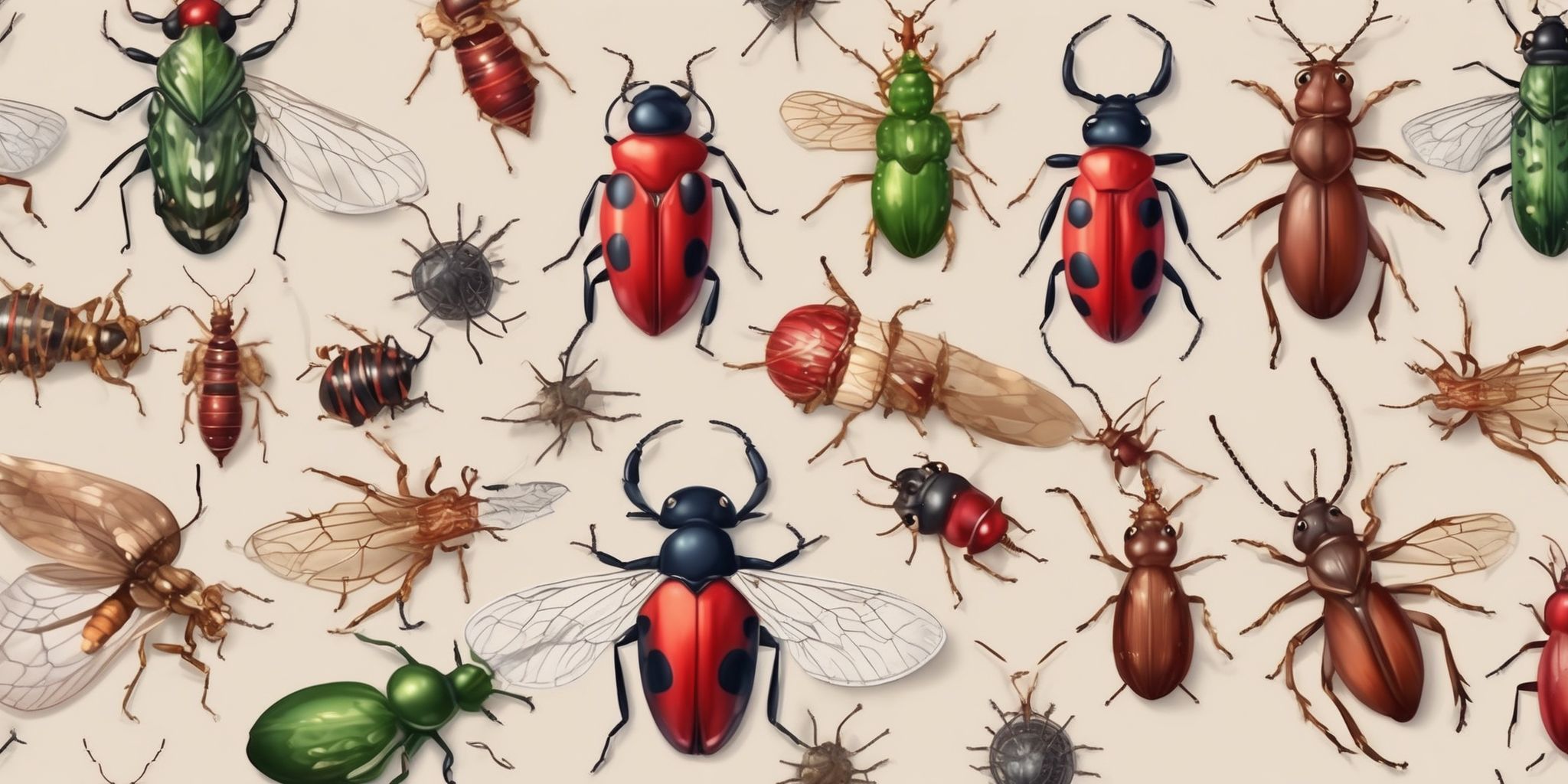- Blog
- Christmas tree
- Beware of Christmas Tree Pests: How to Keep Your Tree Bug-free

Ah, the age-old tradition of bringing home a beautiful Christmas tree to adorn with twinkling lights and shiny ornaments. The scent of fresh pine filling the air, bringing joy and festive cheer to your home.
But wait, before you dive headfirst into the holiday spirit, have you ever considered that those gorgeous evergreen branches might be harboring uninvited guests? Yes, I'm talking about those tiny, pesky bugs that could turn your Christmas celebration into a full-blown pest-infestation nightmare. Fear not, my friend!
In this article, we'll uncover the truth about Christmas tree pests and arm you with the knowledge you need to keep your tree bug-free. Time to take control of your holiday destiny and make this Christmas truly merry and critter-free!
Understanding the Importance of Keeping Your Christmas Tree Bug-free
Keeping your Christmas tree free from pests is vital to ensure a hassle-free holiday season. Nobody wants to discover that their beautifully decorated tree is infested with unwanted bugs. Not only can pests damage the tree, but they can also pose risks to your home and family. For instance, certain pests like mites, aphids, and spiders can cause allergic reactions or trigger asthma symptoms. Moreover, some pests can multiply and spread throughout your house if not properly addressed.
By understanding the importance of a bug-free Christmas tree, you can take appropriate preventive measures and enjoy a festive season without any unwanted surprises.
Common Christmas Tree Pests to Look Out For
Common Christmas tree pests can ruin the festive spirit if not identified and dealt with promptly. One such pest is the aphid, a tiny insect that congregates on tree branches and leaves behind a sticky residue known as honeydew. Another common pest is the spider mite, which creates fine webbing and causes discoloration on tree needles.
Additionally, bark beetles can infest Christmas trees, leaving behind small holes and tunnels in the trunk. It's important to inspect the tree carefully for these pests before bringing it indoors to prevent their spread. Regular shaking, vacuuming, and applying natural remedies like neem oil can help keep Christmas tree pests at bay.
Identifying Christmas Tree Pests
Signs of Infestation
- Presence of small insects crawling or flying around the tree
- Visible eggs or egg casings on the branches or needles
- Discolored, wilting, or misshapen needles
- Webbing or silk threads on the branches or in the tree
- Accumulation of sawdust or frass (insect excrement) at the base of the tree
- Presence of small holes or tunnels in the trunk or branches
Types of Christmas Tree Pests
- Aphids: These tiny insects are common Christmas tree pests that feed on the tree's sap. Look for clusters of small, soft-bodied bugs on the branches.
- Spider Mites: These pests are minuscule and often go unnoticed until their webbing becomes visible. They suck the sap from the leaves, causing discoloration and a dusty appearance.
- Adelgids: These insects resemble tiny bumps on the tree's branches and needles. They primarily infest fir and spruce trees, sucking out sap and causing needle loss.
- Sawflies: Resembling caterpillars, they chew on the needles, leading to defoliation. Spot their presence by looking for small holes or notches in the foliage.
- Pine Needle Scale: These pests attach themselves to the needles, resembling small brown or white bumps.
They extract the sap, causing needles to turn yellow or brown.
Taking the time to familiarize yourself with these common types of Christmas tree pests can help you identify and address any infestations promptly.
Preventing Christmas Tree Pests
Inspecting the Christmas Tree Lot
When visiting the Christmas tree lot, inspecting the trees for pests is important. Look for any visible signs of infestation, such as webs, holes, or crawling insects. Shake the tree gently to see if any insects fall off.
Additionally, examine the branches, needles, and trunk for any abnormalities. Keep an eye out for eggs, larvae, or adult insects. Remember, a thorough inspection can help you avoid bringing unwanted pests into your home.
Choosing a Pest-resistant Tree
When choosing a pest-resistant Christmas tree, consider the following factors:
- Opt for a species known to be less attractive to pests, such as the Fraser fir or the Nordmann fir.
- Inspect the tree for any signs of pests, such as eggs or insects, before purchasing.
- Look for trees with healthy foliage and no visible damage.
- Avoid trees that have been kept in close proximity to infested trees.
- Consider purchasing a potted tree that can be planted after the holiday season to minimize the risk of pests.
By being mindful of these factors, you can significantly reduce the chances of bringing Christmas tree pests into your home.
Shaking and Vacuuming the Tree
To minimize the risk of Christmas tree pests, thoroughly shake the tree before bringing it indoors. This helps dislodge any insects or eggs that might be hiding within the branches. Use a broom or your hands to gently shake the tree from top to bottom. Afterwards, vacuum the tree with a handheld vacuum or a hose attachment. Pay close attention to the branches, trunk, and the surrounding area. This will remove any lingering pests or debris that could potentially infest your home. Remember to empty the vacuum outside to prevent reinfestation.
Treating Christmas Tree Pests
Non-chemical Treatments
Non-chemical treatments can effectively control Christmas tree pests. Using sticky traps is a popular method to catch and eliminate crawling insects. Place the traps near the base of the tree and check them regularly for trapped pests. Another option is applying essential oils with pest-repellent properties, such as peppermint or lemon oil, onto the tree. These natural scents can deter insects without harming the tree or the environment.
Regularly vacuuming or shaking the tree can also remove any lingering pests. Implementing these non-chemical treatments can help keep your Christmas tree bug-free without the use of harmful substances.
Using Sticky Traps
Using sticky traps is an effective method to control Christmas tree pests. These traps consist of adhesive surfaces that catch insects and prevent them from infesting your tree. Simply place the traps near or on the tree to attract and capture pests. The sticky traps work by luring pests with pheromones or attractive scents. Once the pests land on the trap, they get stuck and cannot escape. Regularly check and replace the traps as needed to maintain their effectiveness.
Sticky traps are a safe and easy way to monitor and reduce pest populations on your Christmas tree.
Applying Essential Oils
Applying essential oils is a natural and effective way to repel Christmas tree pests. Here's how to do it:
- Mix a few drops of essential oil, such as peppermint or tea tree oil, with water in a spray bottle.
- Thoroughly spray the diluted oil solution onto the branches and trunk of the Christmas tree.
- The strong scent of the oils acts as a deterrent for pests, keeping them away from your tree.
- Reapply the oil mixture every few days or as needed to maintain its effectiveness.
- Remember to use pure essential oils without any artificial additives for best results.
By utilizing this simple and eco-friendly method, you can protect your Christmas tree from unwanted pests without resorting to harsh chemicals.
Chemical Treatments
Chemical treatments can be an effective solution for dealing with Christmas tree pests. However, it is important to use caution and follow instructions to minimize any potential risks. Here are some points to consider when using chemical treatments:
- Choose pesticides specifically formulated for Christmas tree pests.
- Follow the recommended dosage and application instructions.
- Apply the pesticide outdoors to avoid exposure to harmful chemicals indoors.
- Keep children and pets away from treated trees.
- Consider contacting a professional pest control service for safe and efficient treatment.
Remember, chemical treatments should always be used as a last resort and in conjunction with preventive measures to maintain a bug-free Christmas tree.
Contacting a Pest Control Professional
If you discover a significant infestation of pests on your Christmas tree, it's best to contact a pest control professional. They have the expertise and experience to effectively handle the situation without risking damage to your home or the environment. Pest control professionals can identify the specific pests, recommend appropriate treatments, and ensure the problem is thoroughly resolved. They may use specialized techniques or products to eliminate the pests safely.
By relying on their services, you can have peace of mind knowing that the Christmas tree pests will be dealt with efficiently and effectively.
Proper Disposal of Infested Trees
Proper disposal of infested trees is crucial to prevent the spread of Christmas tree pests. One effective method is to chip or grind the tree into small pieces, destroying any remaining pests and their eggs. These wood chips can then be used in your garden as mulch or compost. Alternatively, you can contact your local waste management service to inquire about tree disposal options available in your area.
Avoid leaving infested trees near your home or storing them in your garage, as this may lead to further pest infestations. Taking these disposal steps will help protect your surroundings from potential Christmas tree pest outbreaks.
Summary
During the holiday season, it's important to be aware of potential pests that can infest your Christmas tree. This article provides helpful tips on how to keep your tree bug-free.
Read On

Finding the Perfect Christmas Tree: Expert Tips and Sale Secrets
Ah, the jingle of bells, the scent of cinnamon, and the twinkling of lights - Christmas is just...

From Pine to Perfection: Mastering Christmas Tree Care and Maintenance
Ah, the holiday season is upon us - a time for festive decorations, merry gatherings, and of...

Essential Care Tips for a Healthy and Beautiful Christmas Tree
The holiday season approaches, bringing with it the timeless tradition of adorning our homes with a...